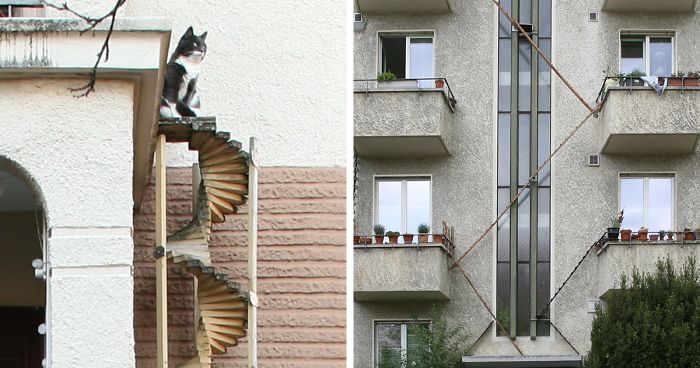
Photographer Documents The Phenomenon Of Cat Ladders In Switzerland (22 Pics)
Outside cat or indoor cat, felines always come and go as they please, and as devout cat loving citizens the residence of Bern, Switzerland have decided to help their furry friends move about more easily – by building cat ladders. The odd but charming Swiss phenomenon has been captured on film by Switzerland-based graphic designer and writer Brigitte Schuster and will be the theme of her fourth book titled Swiss Cat Ladders.
More Info: Website | Pre-Orders | Twitter
Image credits: Brigitte Schuster
The artist uses her home town of Bern as the field for her photographic research and describes the book as: “A closer look at the cat ladders reveals sociological, architectural and aesthetic perspectives, which are elaborated in an accompanying text,” asking questions like, “Whether we humans should really impose the cat ladders we have created, to cats.”
Image credits: Brigitte Schuster
Schuster told Bored Panda she first discovered cat ladders when she moved to Bern five years ago, “When walking through Bern’s neighborhoods, I noticed the many and unusual cat ladders. As someone who comes from outside, unlike some locals, I found these cat ladders extraordinary.”
(Here, the slats are zigzagged along the wall of the house reaching a length that allows the cat to go to the second floor. A kind of fence protects the cat in the upper area from the fall.)
Image credits: Brigitte Schuster
Schuster is a graphic designer, specializing in typography and type design, as well as a writer and teacher and has been working in the field for 15 years. Her expertise has covered the gambit from editorial concepts to concept development to type design. These days she works independently with a focus is on book design and in 2013 founded the imprint Brigitte Schuster Éditeur as a way to “publish personal publications in an independent way and feature projects of her interest.” Brigitte Schuster Éditeur specializes in high-quality books of often limited editions.
Image credits: Brigitte Schuster
Swiss Cat Ladders is the latest from her publishing company and is expected to print in September 2019. “Through a publication, the fugacious and cultural heritage of the cat ladder will be preserved, archived and conveyed to following generations.”
(Treads attached to the rain pipe lead to the second floor. Schuster said this is one of the most unique designs she came across: “Here, instead of vertical wooden boards, rain pipes are used as the vertical main element around which the steps are laid. Specifically, there is no need to use a vertical element, an object – the rain pipe – takes over this role and thus has two functions. It’s certainly one of the least intrusive designs.”)
Image credits: Brigitte Schuster
“I started taking photos of cat ladders with the background to show the photos to others and share with others, which is well possible with a book. My intention is to give importance to this ephemeral subject. A cat ladder is a transient object. It is constantly changing. New cat ladders are added. Old cat ladders are taken off. This mix of continuity and
change is characteristic for the culture of the Swiss capital. The cultural heritage of the cat ladder will be preserved and communicated to future generations,” said the photographer.
Image credits: Brigitte Schuster
She further explained that she sees her work like that of an archivist, “Although there are many cat ladder images available on the Web, there is no complete written documentation on this subject. This publication aims to remedy this deficiency. This should close the gap for a standard work that is not yet available for cat ladders.”
(The model of the simple chicken ladder is used here to gain height: It is built in a zigzag upward (left). A base ladder is used with a relatively flat angle. It is mounted on a wooden pole (right).
Image credits: Brigitte Schuster
Despite a lack of internet presence on the topic of cat ladders, the artist said it’s not the first time she has seen them in other countries, but not with the same intensity as in Switzerland. “Outdoor cat ladders are a European phenomenon. In Germany and Austria, for example, there are also cat ladders, but not in the quantity as they are here in Bern. In North America, cat ladders are an exception, you will find them only sporadically, as well as cats are seen only sporadically outside.”
Image credits: brigitteschuster.com
While photographing inanimate objects may seem easier than photographing animals themselves, Schuster still encountered some challenges: “Sometimes it was not easy to photograph cat ladders that were too close
to buildings so that I could not step back enough to take the ideal photograph. Other times the cat ladder was too far off, to be able to take a good picture.”
(The cat must climb upwards, over several roofs, using two cat ladders.)
Image credits: Brigitte Schuster
Another one of Schuster’s favorite cat ladders combines nature and architecture: “I like to have cat ladders that lead from a tree to the house. Mostly the simple model “chicken ladder” is used to create an extension from the tree to the balcony or window. I like the simplicity of these ladders.”
Image credits: Brigitte Schuster
With a large portfolio of art, she still said that her favorite thing to photograph at the moment is cat ladders and enjoys searching and finding new constructions. Schuster encourages that budding photographers take a page out of her book and “photograph your passion.”
(A cat-ladder reaching to the second floor. Appears to be quite long due to its many subdivisions.)
Image credits: Brigitte Schuster
The cat climbs from the tree to the cat ladder and from there to the balcony.
Image credits: Brigitte Schuster
The majority of cats enjoy being in high places because evolutionarily speaking, it is in their nature. Descendants of Proailurus, the first cat, they are tree-climbing mammals. Today these agile animals don’t need to escape into the trees for safety but they sure do enjoy it and have a flexible musculoskeletal system that provides them with outstanding coordination and balance that allows them to jump high.
Image credits: Brigitte Schuster
The picture shows a rarely seen model, a spiral staircase that can be ordered on the Web
Image credits: Brigitte Schuster
While these whimsical architectural tributes to pets are a sight to behold, cat behaviorist, Anita Kelsey said their cats might not appreciate the effort as much as they should: “They don’t know anything is for them. They like jumping and would be able to see the best route to their home territory whether it’s a ladder, a wall or a pipe.”
Image credits: Brigitte Schuster
Cat stairs with a dwelling place for the cat and possibly other animals. Here is also cat food ready.
Image credits: Brigitte Schuster
Image credits: Brigitte Schuster
Here the mailboxes are used as a support to extend the door sill.
Image credits: Brigitte Schuster
Image credits: Brigitte Schuster
Ladder reaching to the third floor. It is one of the highest ladders seen in Bern.
Image credits: Brigitte Schuster
Image credits: Brigitte Schuster
The vine plantations belonging to the façade are not affected: grapevines and the wood of the cat ladder complement each other.
Image credits: Brigitte Schuster
140Kviews
Share on FacebookI think cat ladders are totally awesome. And the designs are very creative.
Yes. I actually want to build a system of cat ladders and just watch the cats explore them!
Load More Replies...This is one of the most wonderful things I've ever seen :-) How nice that some go across different neighbours wall spaces.
I know! Like with a good cat ladder you can just share your cat with your neighbor. Although honestly the cats would probably just do whatever they want... it's more like you're cat is sharing itself with your neighbor.
Load More Replies...I think cat ladders are totally awesome. And the designs are very creative.
Yes. I actually want to build a system of cat ladders and just watch the cats explore them!
Load More Replies...This is one of the most wonderful things I've ever seen :-) How nice that some go across different neighbours wall spaces.
I know! Like with a good cat ladder you can just share your cat with your neighbor. Although honestly the cats would probably just do whatever they want... it's more like you're cat is sharing itself with your neighbor.
Load More Replies...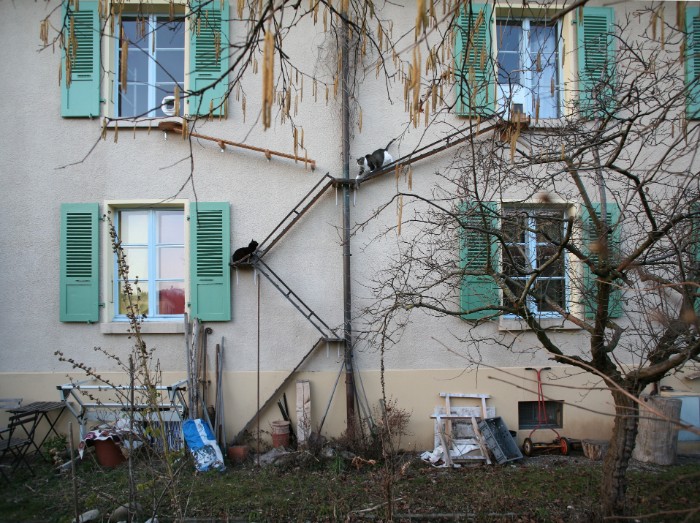
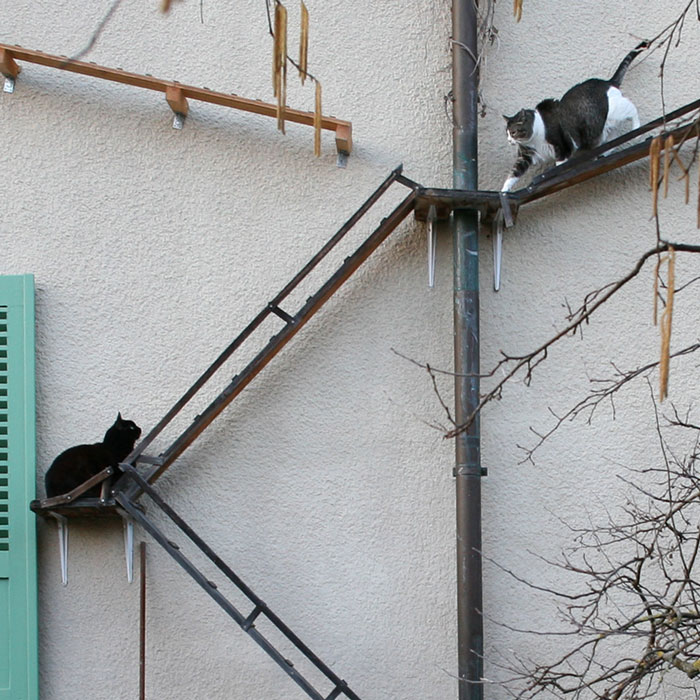
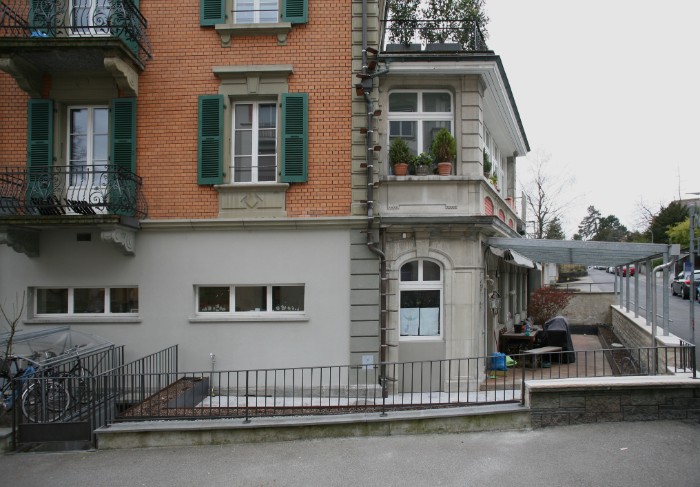
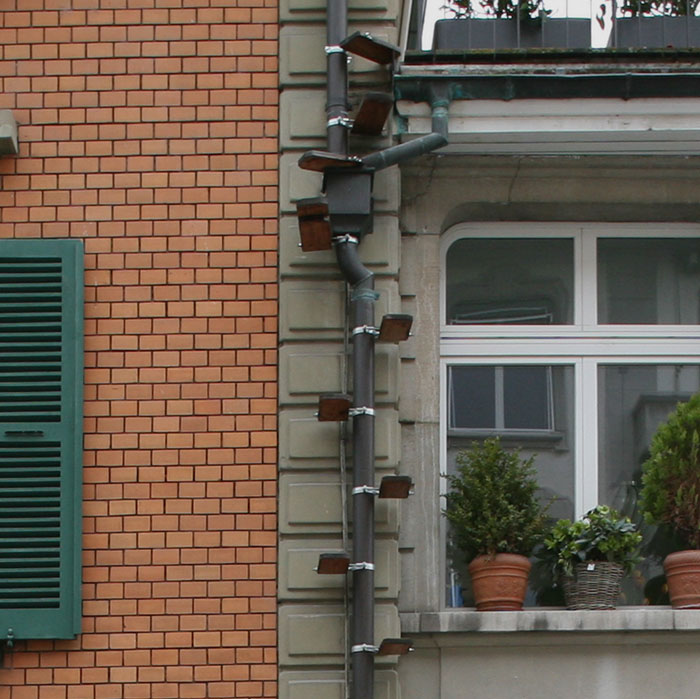
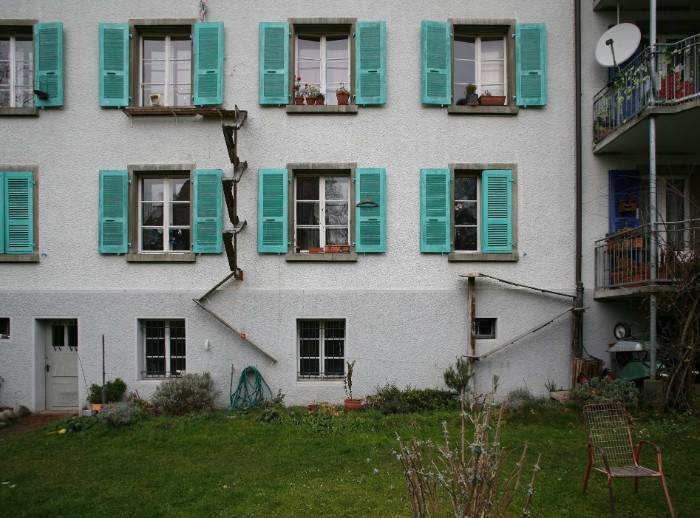
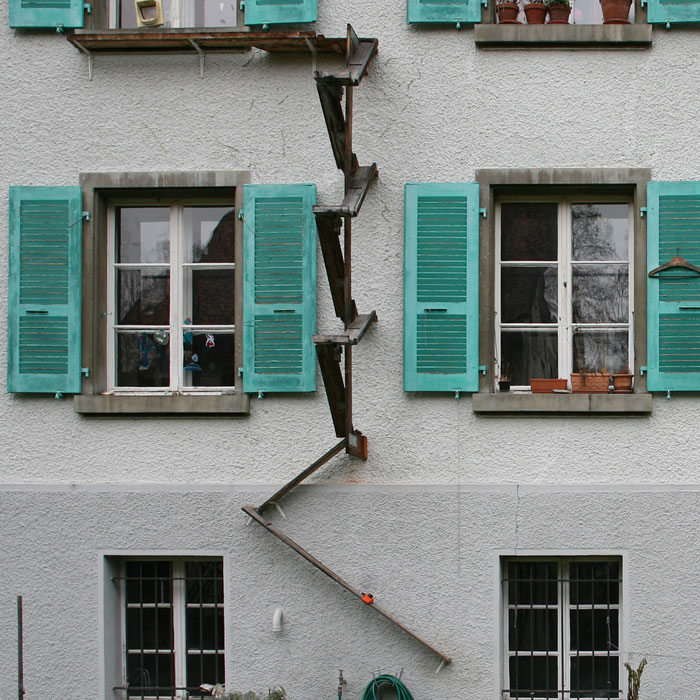
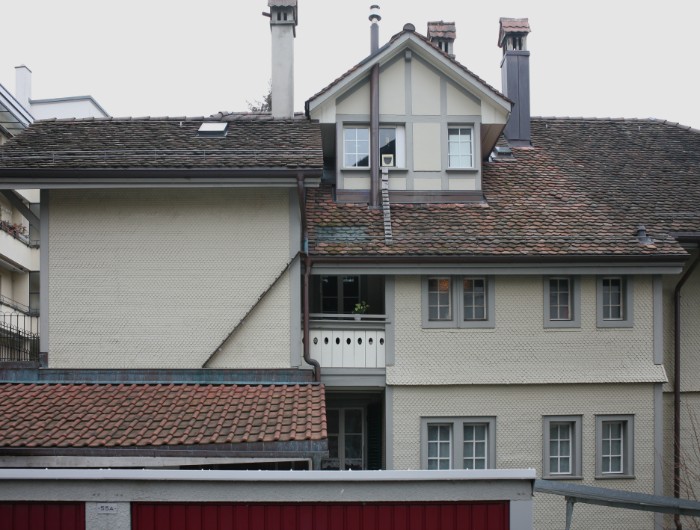
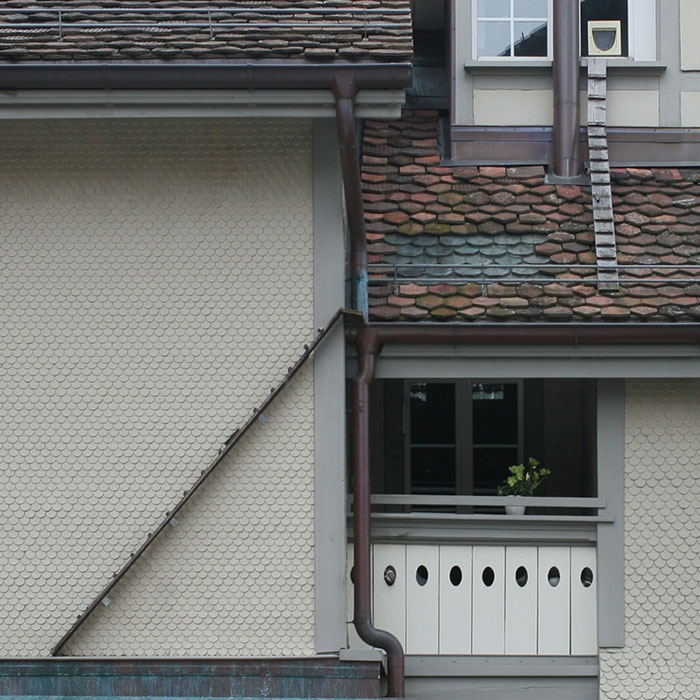
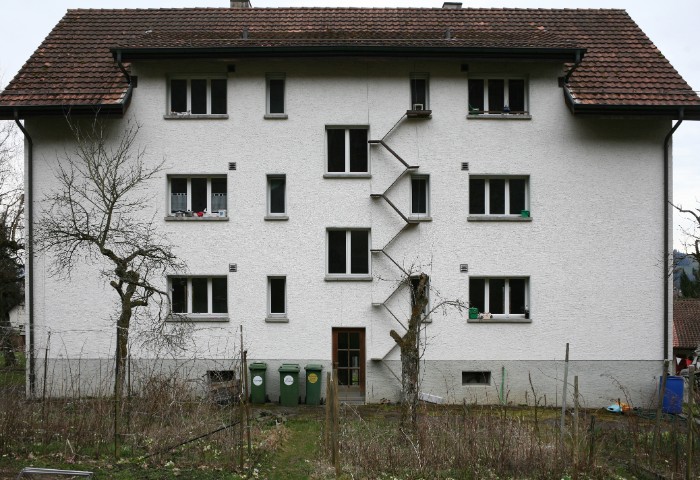
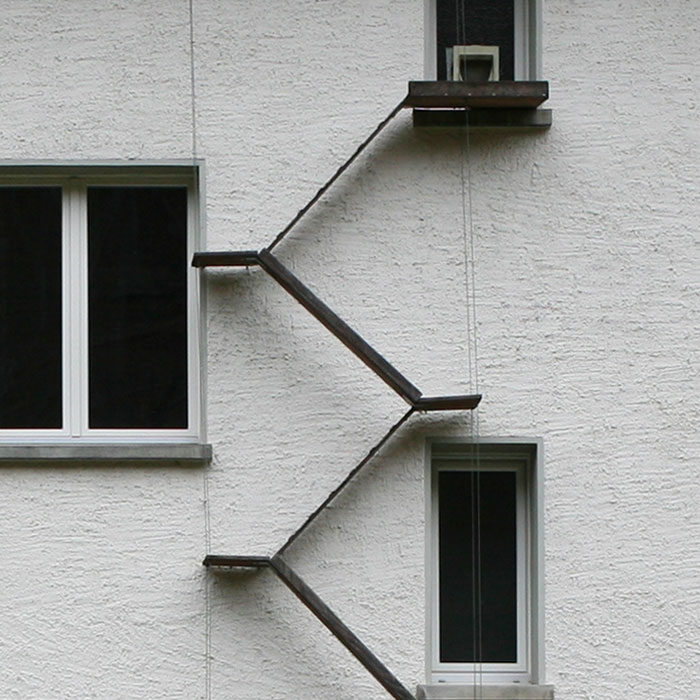
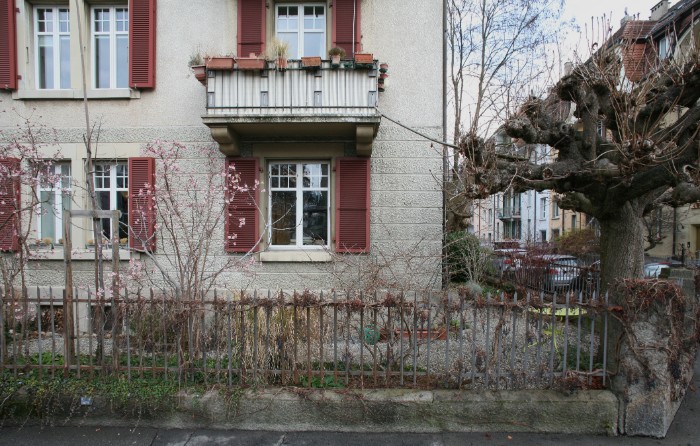
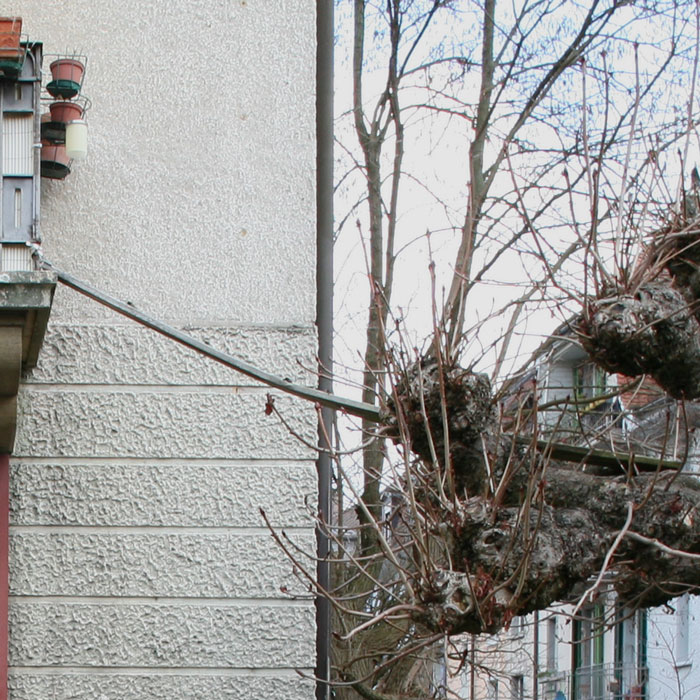
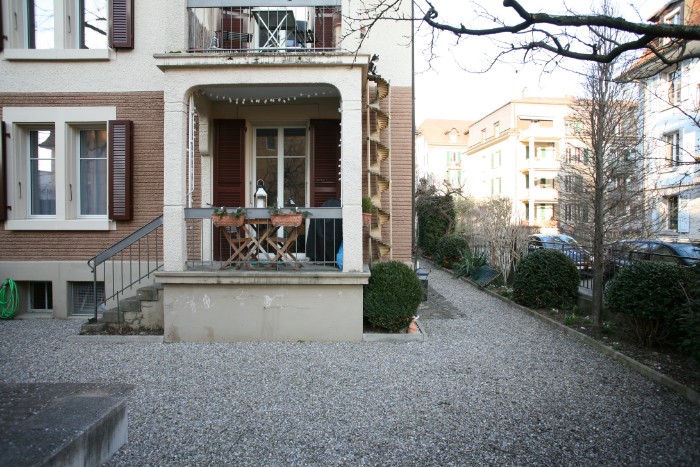
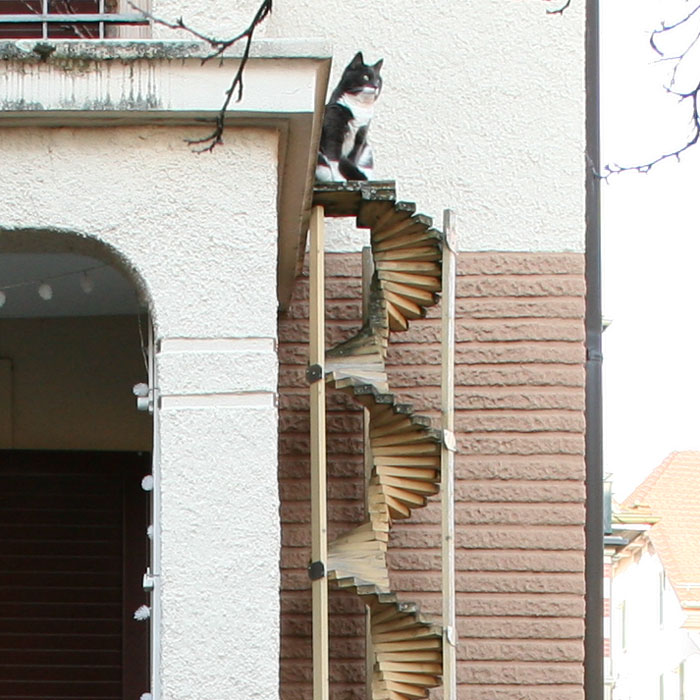
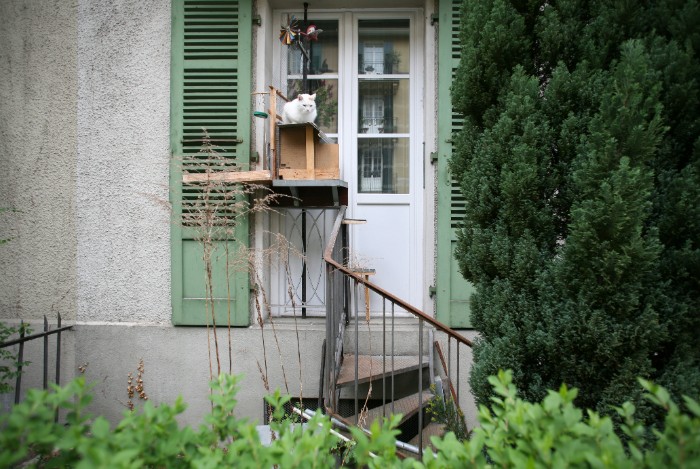
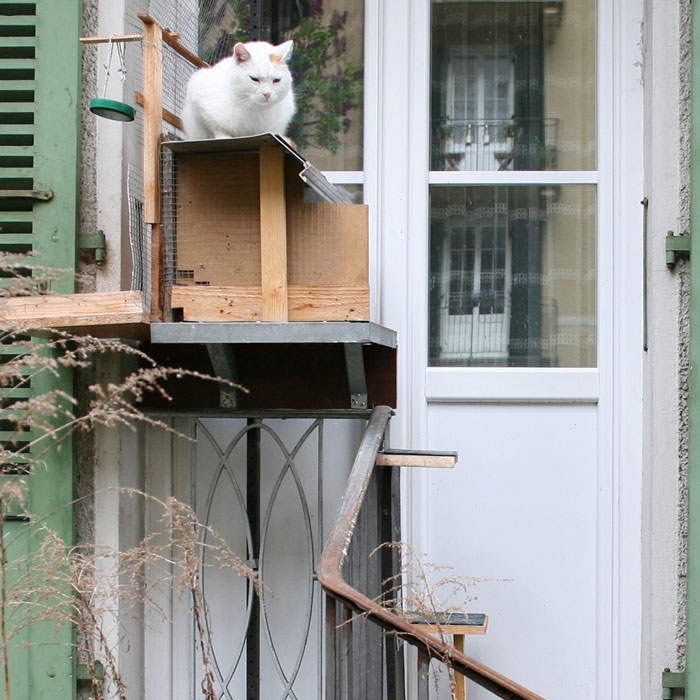
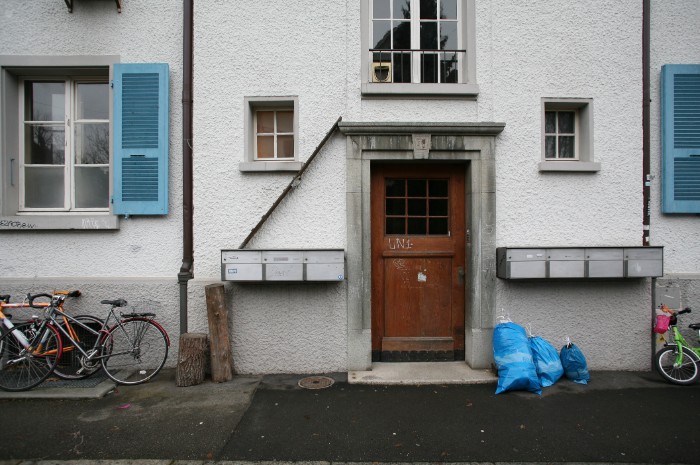

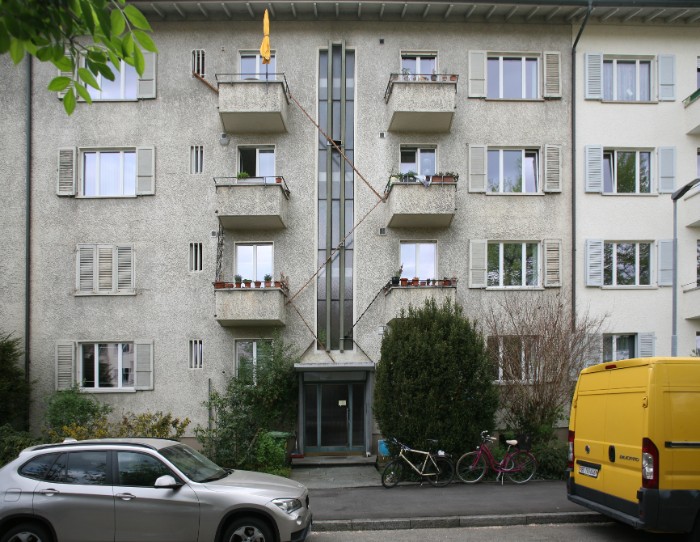
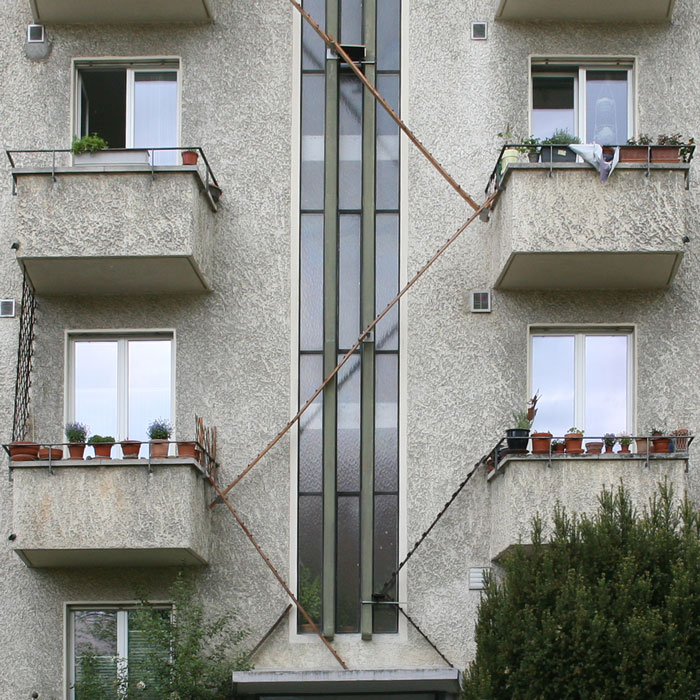
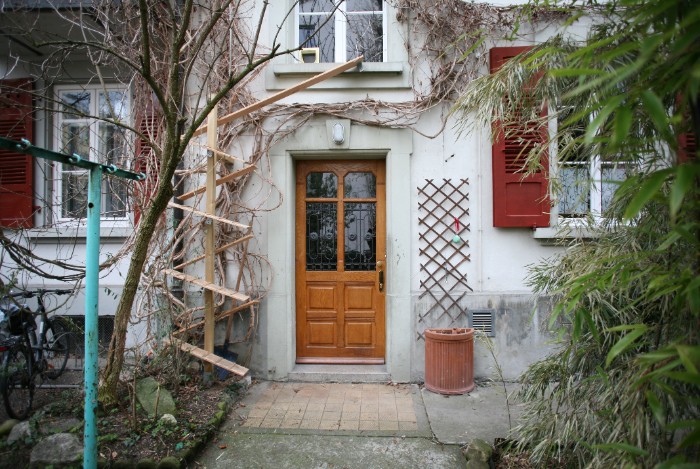
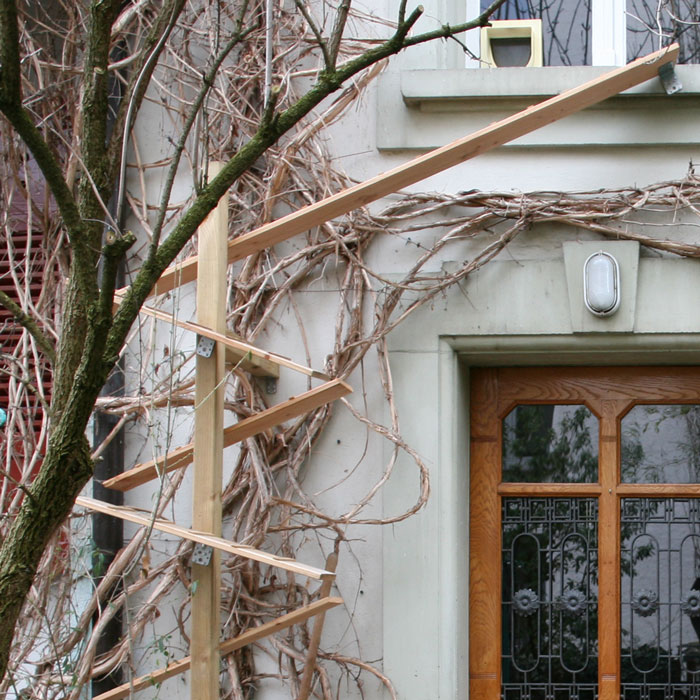



308
57